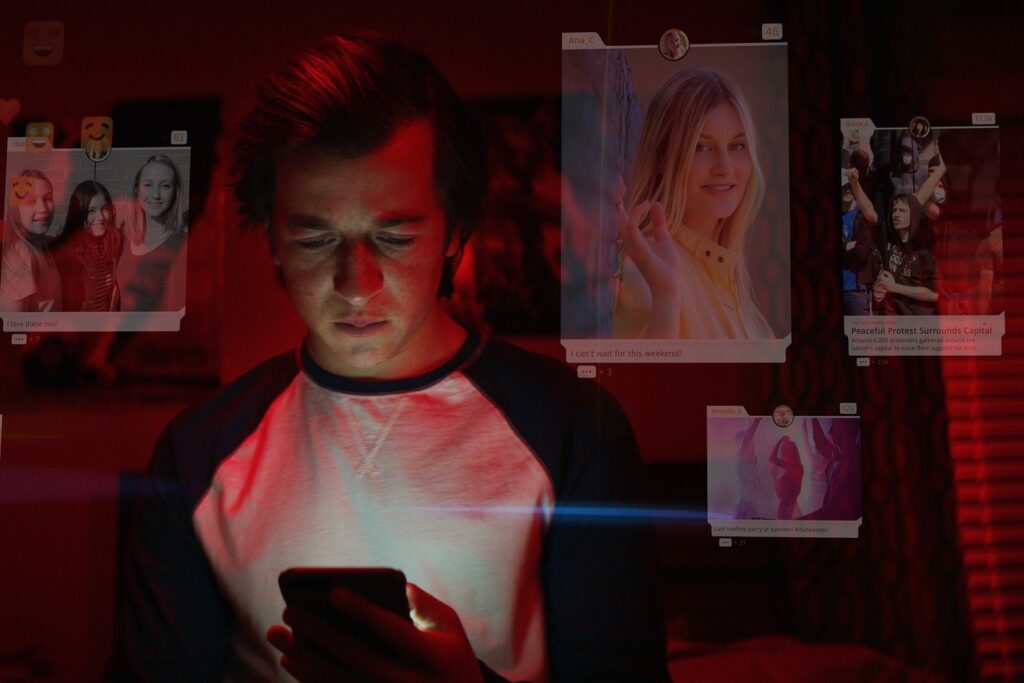Smartphones. . . can’t live with them and can’t live without them. After watching The Social Dilemma on Netflix, I do not want to live with them.
In The Social Dilemma there are interviews with many high-powered ex-employees of companies like Facebook, Instagram, Google, YouTube, Apple and Twitter about how involved these social media platforms are in our lives without us even knowing. The director, Jeff Orlowski, also directed other award-winning documentaries including “Chasing Ice,” which exposes the dangers of climate change, and “Chasing Coral,” that captures the adventures of our changing oceans.
I have always taken pride in not being attached to my cell phone, but in recent years, I catch myself checking my phone close to 30 times an hour (which is absolutely disgusting). Through this documentary-drama, I was made aware of the dangers of being addicted to technology and social media.
The beginning of the drama starts with ex-employees of these powerful social media companies, and they discuss the problem within these companies. They all seem to struggle with explicitly stating what that problem is, which after finishing the film, I learned the actual problem was never stated.
The film quickly goes into a fictional angle where a family is facing the struggles of their kids being addicted to their technology and the voice inside a smartphone, which scared me a bit. It gave a visual idea of the world behind your screen. The film gives a visual of three artificial intelligence panels behind the screen of a phone trying to keep the users constantly involved on their phone. Although I like the aspect of going back and forth from the fictional scenes to the candid interviews, it made a serious film feel a little cheesy.
The film begins to explain that through the use of social media, we (the users) are the product. Advertisers are the customers. Advertisers are paying social media platforms for the attention of their users. Essentially, social media is just selling the users attention to make a profit. This strikingly poignant concept, which was established early in the film, quickly made me want to stop watching because it was so true to reality.
The documentary quickly escalated into a topic I was most afraid of—what these media platforms know about its users.
They know when users are lonely, depressed, happy or sad and what the user is doing late at night. The film made me want to delete every application on my phone, which I believe was the director’s ultimate goal.
As the movie goes on, it becomes more and more dramatic about how these platforms are affecting young adolescents with self-harm rates up for pre-teens and for teen girls especially. One common issue with social media is that platforms cause users to feel in competition with one another, and the film hits on this topic perfectly. It details how these apps get in the minds of young girls by creating images in their heads regarding popular standards of beauty, health and style.
Throughout the whole film, I was waiting for a call to action. How can we fix these social issues revolving around social media? It is not expressed exactly what they want from viewers until the last seconds of the picture.
These experts suggest that users turn off their notifications. I was not expecting such a simple fix for such a large problem, but it was evident that the ex-employees of these powerful companies believe the first step is to turn off notifications that are not urgent. This is because notifications are what get us engaged with our phones.
Overall, the film is worth the watch. It did exactly what it was supposed to by making a viewer more aware of their phone usage. Orlowski did a great job bringing this evidence to viewers, and he gave technology users the knowledge to change their lives.
You may also like
-
Lady Gaga’s “Mayhem” Fails to Disappoint
-
Crossroads Live Delivers a Phenomenal Production of Dear Evan Hansen in Columbus
-
UWG Theatre Breathes New Life into a Beloved Classic
-
QSA Annual Drag Show Entertains Eager, Diverse Crowd
-
Lucy Dacus’ Fourth Studio Album, Forever Is A Feeling, Encapsulates The Vulnerability and Thrill of Falling In Love
